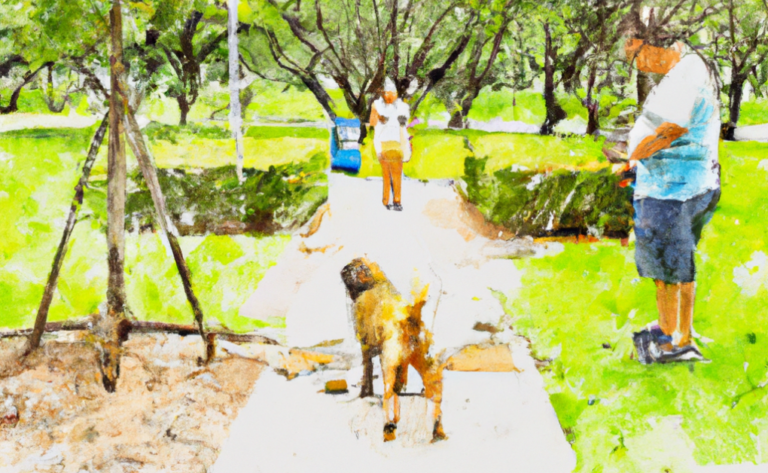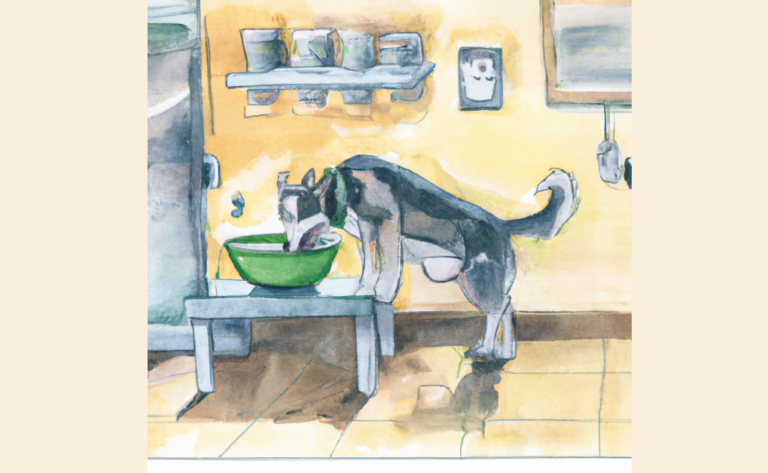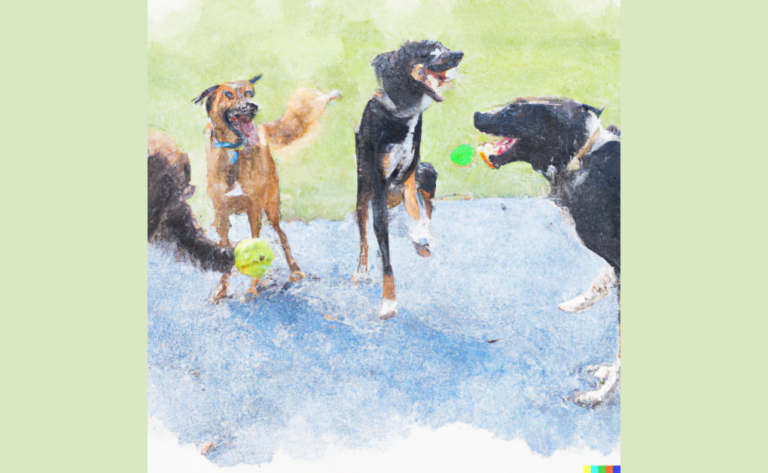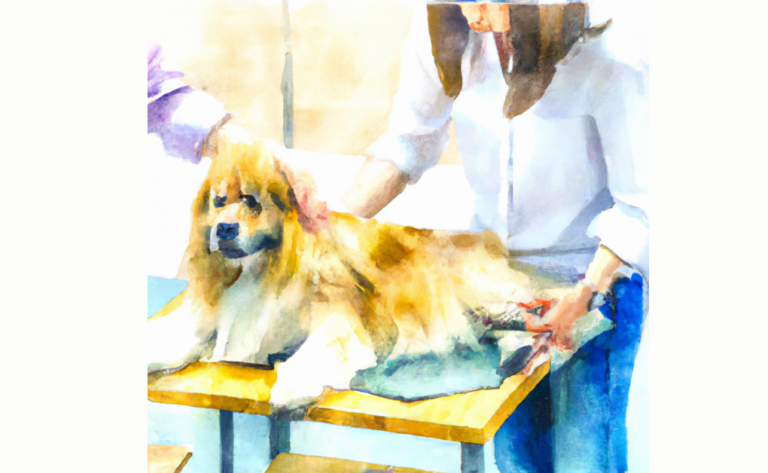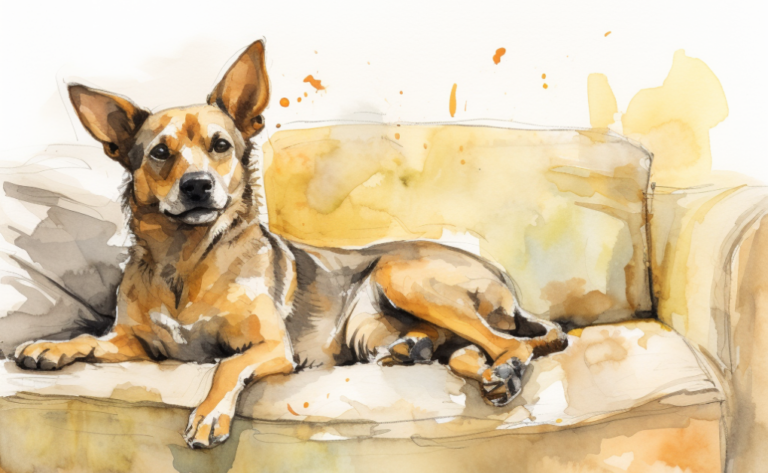How To Care For Newborn Puppies
Introduction
As Chloe excitedly welcomed a litter of adorable newborn puppies into her home, she suddenly realized she was in unexplored territory. With no previous experience in caring for such tiny creatures, Chloe felt overwhelmed and eager to learn the best way to ensure the puppies thrived.
Welcoming a newborn puppy into your home is a thrilling experience! However, it can also be slightly overwhelming, as there’s much to learn about how to care for your little bundle of joy. Caring for a newborn requires knowledge and patience, from feeding schedules to vaccinations and registering your pup. Thankfully, having the correct information can simplify the process and make it more enjoyable. Here’s what you need to know when bringing home a newborn puppy, whether it’s a healthy puppy or an orphaned one:
Pet owners must pay close attention to their newborn puppies’ needs during the first few days. Ensuring they are warm, well-fed, and can urinate and defecate properly is essential. Handling small puppies gently and monitoring them for signs of a congenital disability or health issue is also crucial for their well-being.
So, let’s delve into the world of newborn puppy care and discover how to make this exciting journey smoother for you and your furry companion.
Weight of a Newborn Puppy
When it comes to newborn puppy care, one of the first things you’ll need to know is how much your pup should weigh. Generally speaking, puppies can weigh anywhere from around 2.5 ounces up to 2.25 pounds — however, it’s essential to remember that the ideal weight varies by breed. To ensure your puppy is growing properly, you should weigh each puppy daily for the first two weeks and then at least every three days during their first year.
It’s also important to note that they should be gaining around 10% of their body weight each day — so if they’re not gaining enough or too much, something might be wrong, and you should consult with your veterinarian immediately. But, with some love and attention, your new pup will be on its way to healthy growth in no time!
Newborn Puppy Nutrition
Ensuring newborn puppies receive proper nutrition is vital for giving them the best start in life. During the first few weeks, newborn puppies rely entirely on their mother’s milk, rich in essential nutrients, antibodies, and growth factors necessary for their overall health, growth, and immune system development.
If the mother is healthy and producing enough milk, there is no need to provide additional food for the newborn puppies. The mother’s milk supplies all the required nutrients for the puppies during their first three to four weeks of life. However, if the mother cannot nurse her puppies or her milk supply is insufficient due to issues such as milk fever, feeding the puppies a milk replacer designed explicitly for newborn puppies may be necessary.

A commercial puppy milk replacer is the optimal choice for young puppies, as it closely mimics the nutritional composition of the mother’s milk, providing the right balance of proteins, fats, carbohydrates, vitamins, and minerals. It’s essential to avoid using cow’s milk or goat’s milk, as these types lack the appropriate balance of nutrients needed for a puppy’s growth and development.
To properly care for a newborn puppy and feed them a milk replacer, follow these steps:
- Use a nursing bottle or syringe specifically designed for this purpose.
- Follow the mixing instructions on the milk replacer packaging to ensure consistency and nutrient balance.
- Check the puppies for feeding every two to three hours during the first few weeks of life. Then, gradually reduce the feeding frequency as the puppies grow and transition to solid food.
You can introduce solid puppy food, such as puppy mush, at around three to four weeks. For instance, offer a portion of high-quality, nutrient-dense puppy food moistened with water or a puppy milk replacer as the puppies begin the weaning process. Then, over time, slowly reduce the amount of liquid mixed with the food, eventually transitioning the puppies to dry food by the time they are seven to eight weeks old.
Remember to consult your vet for the best approach to meet your puppies’ specific needs and monitor their progress throughout the weaning process.
Feeding the Nursing Dog
Feeding a nursing dog demands particular attention to her nutritional needs since she provides for herself and her puppies. Therefore, a nursing dog requires a high-quality, balanced, and nutrient-dense diet to maintain her health and support her puppies’ growth and development.
- Select a high-quality food: Offer your nursing dog a nutrient-rich food, ideally formulated for lactating dogs or puppies. These diets cater to the necessary nutrients, calories, and energy for nursing mothers.
- Choose a high-calorie and high-protein diet: A nursing dog’s calorie intake should be increased to support milk production. Therefore, a diet high in calories and protein is essential to meet her heightened energy demands. The food should also contain adequate levels of calcium and phosphorus to support her bone health and the developing skeletal systems of her puppies.
- Increase meal frequency: Feed your nursing dog smaller, more frequent meals throughout the day rather than once or twice daily. This helps maintain her energy levels and ensures she receives a steady supply of nutrients for milk production.
- Provide a nursing-friendly environment: Ensure your nursing dog can access food and water easily. Offer her a quiet, comfortable, clean area to eat and nurse her newborn pups without distractions or stress.
- Monitor her weight and health: Keep a close eye on your nursing dog’s weight and overall health. If she starts to lose weight, consult your veterinarian for advice on adjusting her diet or feeding schedule. Regular veterinary care can help ensure she receives proper nutrition and care during nursing, protecting her and her puppies from infectious diseases.
- Gradually transition back to her regular diet: As the puppies start to wean and transition to solid food (usually around 3-4 weeks), you can gradually reduce the food you provide to your nursing dog. Then, slowly transition her back to her regular diet over a few weeks, monitoring her weight and health.
It’s crucial to consult your veterinarian for specific recommendations on feeding a nursing dog. Individual needs may vary based on the dog’s breed, size, and the number of puppies she is nursing. In addition, your veterinarian can provide personalized advice on your nursing dog’s ideal diet and feeding schedule to ensure she receives proper nutrition and care. This will help give the puppies a strong start as they open their eyes and begin to nurse, even if they face challenges such as a cleft palate.
How to Feed a Newborn Puppy
Newborn puppies rely entirely on their mother’s milk for the first few weeks. Ideally, a mother dog will nurse her puppies, providing them with the essential nutrients and antibodies they need for proper growth and development. However, if the mother is unable or unwilling to nurse or the puppies are orphaned, it’s crucial to provide an appropriate milk substitute.
Here’s what and how to feed a newborn puppy:

- Choose a suitable milk replacer: The best option for feeding a newborn puppy is a commercial milk replacer specifically formulated for puppies. These products are designed to mimic the nutritional composition of a mother dog’s milk and provide the necessary nutrients, including proteins, fats, vitamins, and minerals, to support the puppy’s growth and development.
- Avoid cow’s milk or other animal milk: Do not feed newborn puppies cow’s milk, goat’s milk, or different types of animal milk, as these do not have the correct nutritional balance for puppies and may cause digestive problems.
- Prepare the milk replacer: Follow the instructions on the milk replacer packaging to prepare the formula. Always mix the formula with warm water (not hot), as it should be close to the mother’s body temperature (around 100°F or 38°C) when fed to the puppies.
- Feeding frequency: Newborn puppies should be fed every 2-3 hours around the clock. As they grow older, the frequency of feeding can gradually be reduced.
- Monitor weight gain: Regularly weigh the puppies to ensure they are gaining weight at an appropriate rate. Consult your veterinarian if you notice any issues or concerns with the puppies’ weight gain or overall health.
- Stimulate elimination: Newborn puppies need assistance to stimulate urination and defecation. After each feeding, gently massage the puppy’s genital area with a warm, damp cloth or cotton ball to encourage elimination.
- Gradual weaning: At around 3-4 weeks, puppies can start the weaning process and transition to solid food. Begin by offering a gruel mixture of the milk replacer and high-quality, nutrient-dense puppy food. Then, gradually thicken the gruel until the puppies eat solid food.
Feeding Method
- Use a small bottle or syringe with a nipple attachment designed explicitly for feeding puppies.
- Hold the puppy in a horizontal position (not on its back) to avoid the risk of aspiration.
- Gently insert the nipple into the puppy’s mouth and allow it to suckle. Be patient and make sure the puppy is swallowing the milk.
- Keep a close eye on the formula consumed to ensure the puppy gets enough nutrition.
Remember to consult your veterinarian for specific guidance on feeding and caring for newborn puppies, as their needs can vary depending on factors such as breed, size, and overall health.
How Frequently Should a Puppy Be Fed?
The frequency at which a puppy should be fed depends on age, size, and specific nutritional needs. However, here is a general guideline on how often to feed puppies at various stages of their development:
- Newborn to 4 weeks:
During this stage, puppies rely solely on their mother’s milk or a milk replacer if the mother is unavailable. Newborn puppies should be fed every 2-3 hours around the clock.
- 4 to 8 weeks:
As puppies start the weaning process, they will transition to a gruel mixture of milk replacers and high-quality puppy food. Puppies should be fed 4-5 times a day during this stage.
- 8 to 12 weeks:
Puppies should have transitioned to solid food at this age. They should be fed 3-4 times daily to ensure they receive the nutrients necessary for their rapid growth and development.
- 3 to 6 months:
You can gradually reduce the feeding frequency to 3 times daily during this stage. Monitor the puppy’s growth and weight gain to ensure it receives adequate nutrition.
- 6 to 12 months:
For most puppies, feeding twice a day (morning and evening) is sufficient during this period. However, some larger breed dogs may still require three meals a day until they reach 12 months of age.
- One year and older:
Most adult dogs can be fed twice daily. However, some small breeds or dogs with specific dietary requirements may still need to be fed thrice daily.
It’s essential to consult your veterinarian for guidance on the appropriate feeding frequency and portion sizes for your pet, as breed, size, activity level, and overall health can influence their nutritional needs. Additionally, always provide fresh water for your puppy to ensure proper hydration.
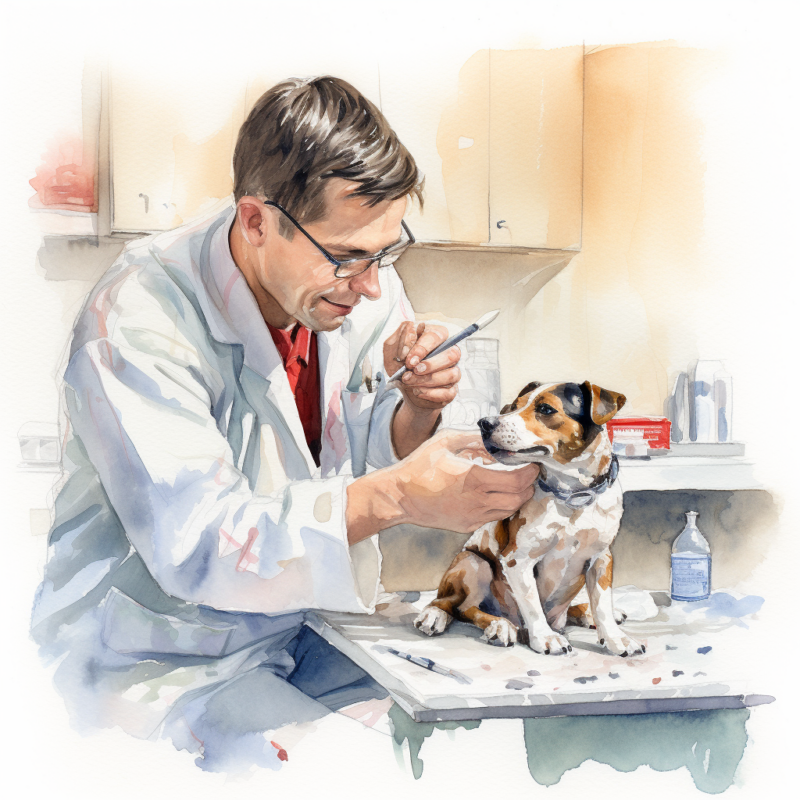
When Should Puppies Receive Their Initial Veterinary Examination?
Puppies should receive their initial veterinary examination within the first week after bringing them home, ideally between 6 to 8 weeks of age. This first visit is crucial for ensuring the puppy’s overall health and establishing a solid foundation for its future well-being, as puppies are vulnerable to various health issues, such as fading puppy syndrome.
During the initial vet visit, the following may occur:
- Physical examination: The veterinarian will perform a thorough physical examination to check the puppy’s overall health. This may include checking the puppy’s body condition, coat, eyes, ears, mouth, and teeth, listening to its heart and lungs, and examining its abdomen and joints for abnormalities.
- Vaccinations: The veterinarian will discuss your puppy’s appropriate vaccination schedule based on age, breed, and risk factors. Core vaccines, such as those for canine distemper, parvovirus, and adenovirus, typically start between 6-8 weeks and are administered every 3-4 weeks until the puppy is around 16 weeks old.
- Parasite prevention: The vet will check your puppy for signs of internal and external parasites, such as fleas, ticks, and worms. If necessary, they may administer a deworming treatment and recommend a suitable parasite prevention program.
- Nutrition and feeding: The veterinarian may discuss the puppy’s dietary needs, recommend high-quality puppy food, and guide feeding schedules and portion sizes for proper nourishment.
- Behavior and training: The vet can address any concerns about the puppy’s behavior, provide essential training tips, and recommend socialization opportunities to help the puppy develop into a well-adjusted adult dog.
- Spaying or neutering: The veterinarian will discuss the benefits of spaying or neutering your puppy and help you determine the appropriate age for the procedure.
- Microchipping: The vet may recommend microchipping your puppy for permanent identification and discuss the process with you.
- Future appointments: The veterinarian will outline the necessary future visits for vaccinations, wellness check-ups, and dental care.
This first visit is an excellent opportunity to ask the veterinarian any questions or address any concerns you might have about your puppy’s health and well-being. Building a solid relationship with your vet ensures your puppy’s long-term health and happiness.
How To Potty Train a Puppy
Potty training a puppy is essential to raising a well-behaved and healthy dog. It requires patience, consistency, and positive reinforcement. Here are some steps to help you potty train your puppy:
- Establish a routine: Set a regular schedule for feeding, playtime, and potty breaks. Puppies usually need to go to the bathroom after waking up, eating, and playing. So take your puppy out first thing in the morning, before bedtime, and after each meal. Additionally, plan potty breaks every 1-2 hours, as puppies have small bladders and must go frequently.
- Choose a designated potty spot: Select a specific area outside for your puppy to use as its potty spot. Then, always take your puppy to this spot when it’s time for a bathroom break. This will help your puppy associate the location with going to the bathroom.
- Use a cue word: When you take your puppy to the designated potty spot, use a cue word or phrase like “go potty” or “do your business.” This will help your puppy understand what you expect from it. Be consistent with the cue word you choose.
- Praise and reward: When your puppy goes to the bathroom in the designated spot, praise it immediately and offer a small treat. This positive reinforcement will encourage your puppy to repeat the behavior.
- Watch for signs: Keep an eye on your puppy for signs that it needs to go to the bathroom, such as sniffing, circling, whining, or squatting. When you notice these signs, quickly take your puppy to the designated potty spot.
- Confine when necessary: If you cannot supervise your puppy, consider confining it to a crate or a small, puppy-proofed area. Puppies usually avoid going to the bathroom in their sleeping area, which can help prevent accidents.
- Clean up accidents: If your puppy has an accident indoors, immediately use an enzyme-based cleaner to remove any lingering smells that could attract your puppy to the same spot again.
Potty training takes time and patience. Expect accidents to happen, and remember that consistency is critical. Don’t punish your puppy for accidents; this can create fear and anxiety, making potty training more difficult.
Following these steps and remaining consistent, your puppy should gradually learn to go to the bathroom outside and develop good potty habits.
Frequently Asked Questions
Disclaimer: The information provided on this veterinary website is intended for general educational purposes only and should not be considered as a substitute for professional veterinary advice, diagnosis, or treatment. Always consult a licensed veterinarian for any concerns or questions regarding the health and well-being of your pet. This website does not claim to cover every possible situation or provide exhaustive knowledge on the subjects presented. The owners and contributors of this website are not responsible for any harm or loss that may result from the use or misuse of the information provided herein.



